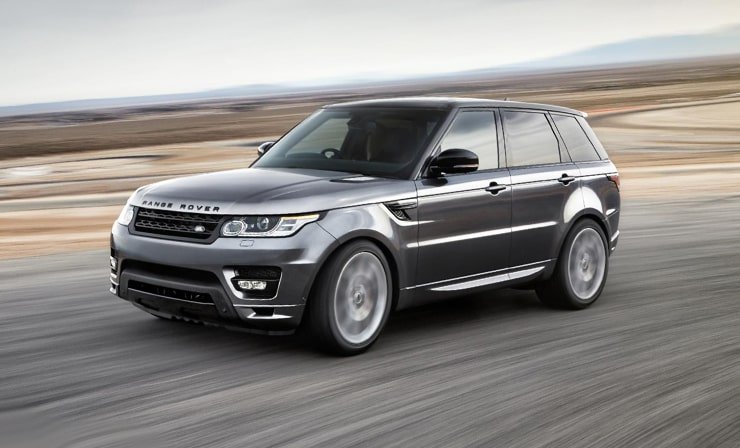he Range Rover brand has become synonymous with luxury SUVs that offer unparalleled performance, durability, and versatility. An essential component of this reputation is the Range Rover engine—a powerhouse of engineering that combines power, efficiency, and advanced technology to deliver a superior driving experience on both urban streets and rugged terrains. In this article, we’ll take a closer look at the evolution of the Range Rover engine, its cutting-edge features, performance specs, and the role it plays in defining the Range Rover as one of the world’s most respected luxury SUVs.
1. History and Evolution of the Range Rover Engine
The Range Rover made its debut in 1970, establishing a new segment for luxury off-road vehicles. Since then, its engines have evolved significantly, growing from relatively simple V8 gasoline engines to today’s lineup of sophisticated options, including turbocharged, supercharged, hybrid, and fully electric engines.
Early Range Rover models were powered by a 3.5L V8 engine derived from Buick, producing around 130 horsepower—a decent output at the time, but modest by modern standards. Over the years, the engines have undergone significant improvements to meet evolving standards of power, fuel efficiency, and emissions. Today’s Range Rover engines are a showcase of Land Rover’s commitment to sustainable and high-performance powertrains, offering a range of choices from high-torque diesel engines to advanced plug-in hybrids and all-electric options.
2. Key Features and Technologies in Range Rover Engines
Modern Range Rover engines are equipped with a host of innovative technologies that optimize power output, fuel efficiency, and environmental sustainability. Here are some of the standout features:
- Ingenium Engine Family: Range Rover’s Ingenium engine family includes a variety of inline-4, inline-6, and V8 engines, all designed for performance and efficiency. The Ingenium engines are built using lightweight materials and modular design, allowing for easier maintenance and repair. They feature advanced turbocharging and electrification technology, improving fuel economy and reducing emissions without sacrificing power.
- Mild Hybrid and Plug-in Hybrid Options: Range Rover has embraced hybrid technology, offering mild hybrid (MHEV) and plug-in hybrid (PHEV) versions across its lineup. Mild hybrids use a 48-volt electrical system to capture energy during braking, which can then assist the engine and improve fuel efficiency. Plug-in hybrids combine an internal combustion engine with an electric motor, allowing for short-distance electric-only driving while still providing the flexibility of a gasoline engine.
- Supercharging and Turbocharging: Range Rover engines often feature either supercharging or turbocharging, boosting performance by increasing the air intake into the engine for greater combustion power. The supercharged V8, for example, is known for its ability to deliver impressive power and acceleration, while the turbocharged inline-6 engines balance efficiency with high performance.
- Electronic Air Suspension: While not part of the engine itself, the electronic air suspension works in harmony with the powertrain to improve handling, comfort, and performance. It can adjust ride height and stiffness based on driving conditions, ensuring smooth and stable performance on all terrains.
These technologies are part of Land Rover’s commitment to developing high-performance engines that meet modern demands for efficiency, emissions reduction, and versatility.
3. Range Rover Engine Performance Specifications
Range Rover offers a variety of engine options, each designed to cater to different performance needs and preferences. Here’s a look at some of the most popular engine configurations:
- 2.0L PHEV: The 2.0L four-cylinder plug-in hybrid engine combines gasoline and electric power for a total output of around 398 horsepower. This engine is efficient and allows for short-distance, all-electric driving, making it ideal for urban commutes.
- 3.0L Turbocharged Inline-6: This mild hybrid engine combines a 3.0L inline-6 with turbocharging and mild hybrid assistance, producing around 395 horsepower and 406 lb-ft of torque. It delivers excellent acceleration and fuel efficiency for a full-sized SUV, balancing performance and sustainability.
- 5.0L Supercharged V8: Known for its powerful performance, the 5.0L V8 engine is supercharged and delivers up to 557 horsepower and 516 lb-ft of torque in high-performance models like the Range Rover SVR. This engine is designed for those seeking maximum power and acceleration, allowing the SUV to reach 0-60 mph in just 4.3 seconds.
- 3.0L Diesel Inline-6: Diesel engines remain popular in some markets, particularly for those who need high torque for towing and off-road performance. The 3.0L inline-6 diesel engine delivers substantial low-end torque, making it ideal for rugged terrain and heavy-duty applications.
These engine configurations allow Range Rover to offer a range of options suited for luxury, performance, and environmental consciousness, catering to the diverse needs of its customer base.
4. Advanced Emissions Control and Efficiency
With tightening global emissions regulations, Range Rover has invested heavily in developing engines that meet environmental standards while still delivering powerful performance. Their Ingenium engines incorporate emissions-reducing technologies such as:
- Selective Catalytic Reduction (SCR): This system reduces nitrogen oxide emissions by injecting a urea solution into the exhaust stream, transforming harmful NOx emissions into harmless nitrogen and water. It’s commonly used in diesel engines but can also be applied to some gasoline engines.
- Particulate Filters: Both diesel and gasoline engines in the Range Rover lineup use particulate filters to capture fine particles from the exhaust. This technology improves air quality and ensures compliance with stringent emissions regulations in Europe, the United States, and other markets.
- Hybridization and Electrification: Hybrid engines not only improve fuel efficiency but also help to lower emissions by allowing the engine to shut off in stop-and-go traffic, which reduces idling and fuel consumption. Plug-in hybrids provide further emissions reductions by enabling electric-only driving in urban settings.
These advanced emissions-control systems ensure that Range Rover engines remain competitive in terms of environmental responsibility while delivering high-end performance.
5. Range Rover’s Commitment to Electric Future
Land Rover, the parent company of Range Rover, has pledged to transition to electric powertrains across its entire lineup in the coming years. The brand aims to offer a fully electric model of every vehicle in its range by the 2030s, aligning with global efforts to reduce carbon emissions and environmental impact.
The move toward electric vehicles (EVs) represents a significant shift for Range Rover, which has traditionally been known for its powerful combustion engines. The upcoming fully electric Range Rover models are expected to combine the brand’s signature luxury and off-road capability with the benefits of electric power, such as instant torque and zero emissions. This transition will mark a new era for Range Rover, allowing the brand to maintain its position as a leader in the luxury SUV market while embracing sustainability.
6. Off-Road Performance and Engine Versatility
One of the defining characteristics of Range Rover engines is their ability to handle both on-road and off-road conditions with ease. Range Rovers are equipped with systems like Terrain Response and All-Wheel Drive (AWD), which optimize engine output, traction, and stability based on driving conditions. The Terrain Response system, for example, allows the driver to select modes for different surfaces, such as mud, sand, or snow, automatically adjusting engine torque, suspension, and power distribution for optimal control.
The engines’ high torque output, especially in diesel models, provides the necessary power for traversing difficult terrains and towing heavy loads. Additionally, the Range Rover’s engine management system can adjust throttle sensitivity and transmission settings to provide a more responsive or conservative driving experience, depending on the driver’s preference or environmental needs.
7. The Role of Range Rover Engines in Defining Luxury SUVs
The Range Rover engine plays a crucial role in the vehicle’s appeal as a luxury SUV. The brand’s commitment to power, smoothness, and adaptability makes its engines suitable for both everyday commutes and adventurous journeys. The engine’s refinement and quiet operation contribute to the cabin’s luxurious feel, creating a serene driving environment even at high speeds or on rugged terrain.
The engines in Range Rover vehicles reflect the brand’s emphasis on quality and innovation. Their powerful performance capabilities and attention to detail have cemented Range Rover as a leader in luxury SUVs, appealing to drivers who value both style and substance.
Conclusion
The Range Rover engine is more than just a means of propulsion—it’s an essential component of the brand’s identity. From powerful V8s to eco-friendly hybrids, the engines in Range Rover vehicles have evolved to meet the needs of a diverse and demanding clientele. By combining power with advanced technology, efficiency, and versatility, Range Rover engines continue to define what it means to be a luxury SUV, staying true to the brand’s heritage while looking forward to a more sustainable future. As Land Rover transitions towards electrification, the Range Rover engine remains a symbol of innovation, luxury, and unmatched performance on any terrain.
















Leave a Reply